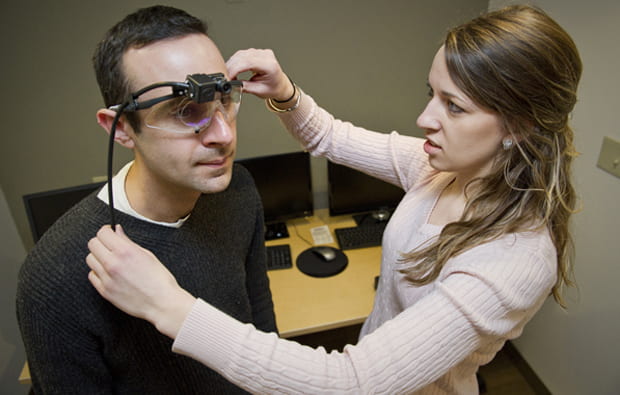
Methodology
We use a multi-method approach to understand age and individual differences in emotional processing. These methods include:
Eye Tracking
Eye tracking technology allows us to examine the link between visual attention and affective experience. We use eye tracking to record where participants direct their visual attention toward emotional content, including still pictures and videos. We use a range of different systems:
- Stationary eye trackers that sit on the desktop, which track where a person is looking on a desktop computer
- Mobile eye trackers that people wear (shown below), which allow people to move around within an environment
- Portable eye trackers that are lightweight and can be used within people’s homes or other places

Psychophysiology
Physiological measures, such as electrocardiography and electrodermal response, help us see how our bodies process emotions differently with age. In order to investigate the physiological response participants during our studies, we assess various outcome measures. Our system is from Mindware Technologies Ltd. and is equipped to measure the following:
- Electrocardiogram and Cardiac Impedance: allows assessment of the cardiovascular and vascular changes in response to a study’s experimental manipulations. More advanced statistics can be computed offline such as changes in heart rate, heart rate variability, blood flow in the vasculature, and respiration rate.
- Electrodermal Response: is used to measures changes in electrical property of the skin in response to the emotional state of an individual.
- Electromyography (EMG): Facial EMG is used to measure activation of specific muscles to objectively index emotional expressions.
